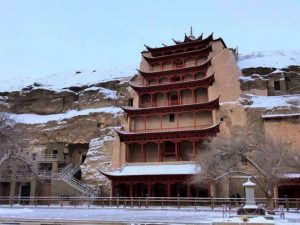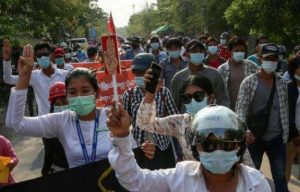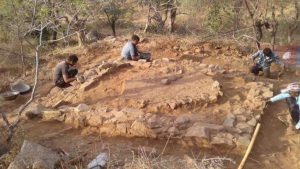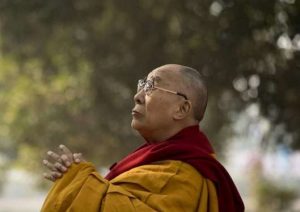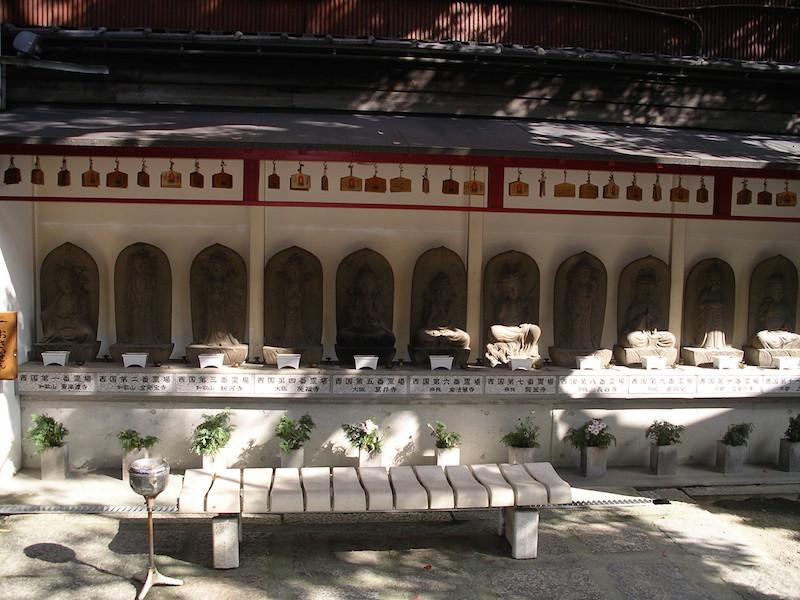
Since the Meiji restoration in the 19th century, Buddhism in Japan has seen the development of a third category of practitioner in addition to the usual two: monastics and laypeople (or four, if we distinguish by gender). While laypeople in the traditional sense contributed to the life of the sangha—the Buddhist community—through donations, participation in the danka (a group of parishioners tied to a local temple through funeral and commemoration rites), and reception of the precepts, an increasing number of laypeople have begun to participate in practices formerly assigned to monastics. One such practice that has recently become very popular in Japan is that of pilgrimages dedicated to particular deities, founders of schools, or specific geographical regions.
The most famous of the pilgrimages in Japan is the “88 places of Shikoku,” dedicated to Kukai (774–835). Like the “13 Buddhas of Osaka,” the “34 places of Chichibu” (dedicated to the bodhisattva Kannon [Skt. Avalokiteshvara]), and the “36 places of Tohoku” (dedicated to Fudo Myo’o [Skt. Acala-vidyaraja]), the “88 places of Shikoku” are associated with Shingon Buddhism. I use the term “associated” to indicate that the pilgrims are limited neither to the members of any Shingon lineage in particular nor to any Buddhist school in general. While the oft-touted sectarianism of Japanese Buddhism may be important in questions of ideology and possibly identity, it is not so to practice itself.
Kukai, posthumously known as Kobo Daishi, studied Chinese literature at a young age, received an unofficial ordination, and then left the monastic setting to conduct the life of a “hijiri” (traveling mendicant) or “yamabito” (mountain person), the precursors to Shugendo mountain practice that emerged during the second half of the Heian period (794–1195) drawing on esoteric Buddhist and Shinto elements. During his time as a mountain hermit, Kukai had several intense religious experiences, one of which included a vision of the Buddha Mahavairochana. He left for China in 804 ostensibly to study tantric literature, practiced under the monk Huiguo at Qinglong Monastery in Chang’an (today’s Xi’an), returned to Japan in 806, and made Mt. Koya the headquarters of his brand of esoteric Buddhism, literally “mikkyo” (secret teaching). At the core of his teaching was the claim that one could “become a Buddha in this body” (J. sokushinjobutsu), central to which practice are the “Womb World Mandala” (J. Daizokai mandara) and the “Diamond World Mandala” (J. Kongokai mandara).
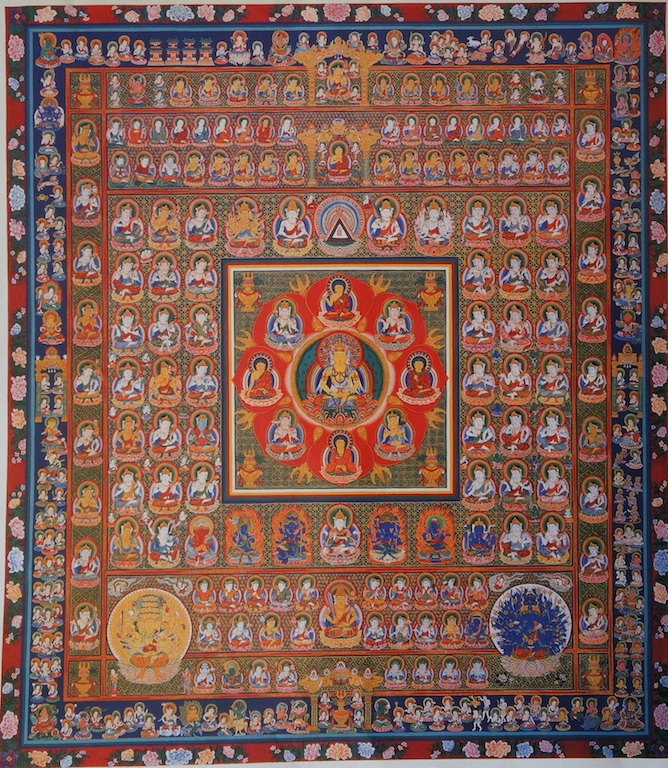
Like in other forms of Vajrayana Buddhism, Shingon mandalas provide a map to the heart/mind (J. shin) of the Buddha and the heart/mind of the practitioner, the former personifying the macrocosm, the latter, a microcosm. The Womb World Mandala illustrates the world view of Shingon thought and the purpose of Shingon practice best. In the center of this mandala is the Buddha Mahavairochana, who is also depicted at top center in the Diamond World Mandala. Mahavairochana is surrounded directly by four other Buddhas and four bodhisattvas, who rest on the eight petals of the lotus on which Mahavairochana resides, and indirectly by numerous other Buddhas, bodhisattvas, vidyaraja, heavenly beings, figures central to the Buddhist traditions, and Buddhist artifacts and symbols. However, every image in the mandala expresses an aspect of Mahavairochana and, by default, the human “bodymind” (J. shinjin) (Shaner 1985). Taken together, the images constitute the Buddha Mahavairochana in totality.
Shingon practice involves visualizing each image in the mandala as well as chanting the mantra and performing the mudra associated with each image. This practice is said to unlock the “three mysteries” (J. sanmitsu) of body, speech, and mind, and to transform the practitioner’s body, speech, and mind into those of Mahavairochana.
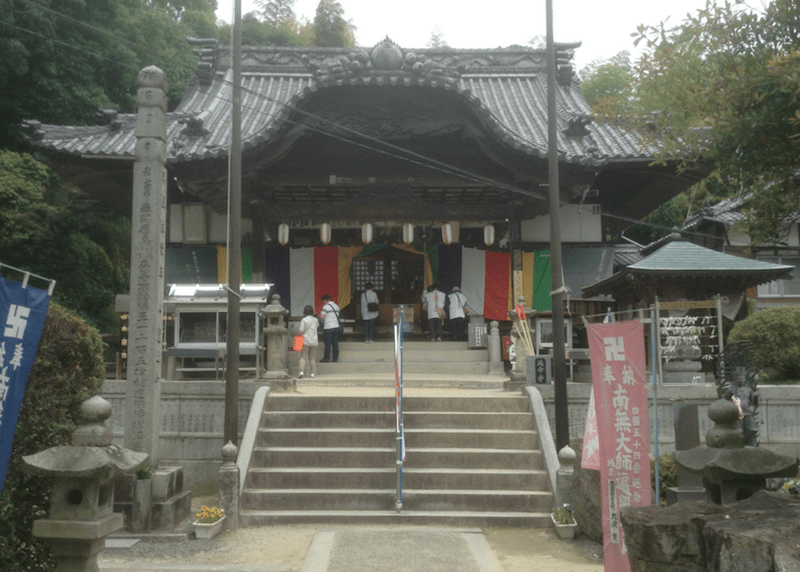
At first sight, the pilgrimage of Shikoku may seem like a completely different kind of practice. Pilgrims have been following the trail along the coastline of the island Shikoku to honor and commemorate the life and work of Kukai since the late Heian period. Today, people perform this pilgrimage—which is some 1,400 kilometers long—by either bus, car, motorbike, or bicycle, or on foot. In general, only those using one of the last two methods are considered “practitioners” (J. shugyosha) since only these two methods rely on using their own physical and psychological strength. However, most Japanese Buddhists will concede that to complete the pilgrimage by any means is a merit-bestowing activity. Most pilgrims embark on this long and arduous practice to help them cope with some significant upheaval in their lives: the death of a loved one, divorce, unemployment, retirement, or simply a crisis of meaning. Recently, the pilgrimage has also become a form of religious tourism, many people completing only certain parts due to a lack of time or financial resources. But whatever the reason for undertaking the pilgrimage and whatever form it takes, the pilgrims are united by the saying “two walking together” (J. dogyo ninin), indicating the presence of Kukai that many pilgrims say they feel on the road.
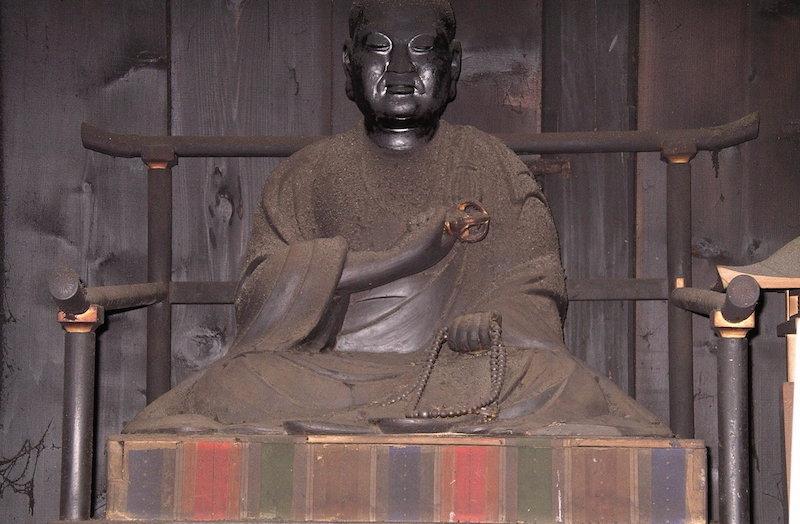
When one looks more closely, however, there are in fact many similarities between the pilgrims and the monastics who engage in meditation on the mandala. Like the monastics, the pilgrims are separated geographically from the workaday world. They wear the white garment symbolic of death along with paraphernalia reminiscent of monastic life and funerals; thus, the pilgrims symbolically die to society. At each of the 88 temples along the route, the pilgrims bow as they enter the main gate, purify their hands, mouth, and forehead at the “purification basin” (J. temizuya), bow to the main image, chant the respective mantra, and perform the gesture of “putting the palms together” (J. gassho). They then chant the Heart Sutra and continue on their way. Ideally, the pilgrims perform this practice 88 times while circumambulating the island, moving from one Buddha image to the next. Thus, not unlike the monastics contemplating all the images in the mandala, the pilgrims purify their body, speech, and mind in order to “become a Buddha in this body.”
References
Shaner, David Edward. 1985. The Bodymind Experience in Japanese Buddhism: A Phenomenological Perspective of Kukai and Dogen. Albany: SUNY.






